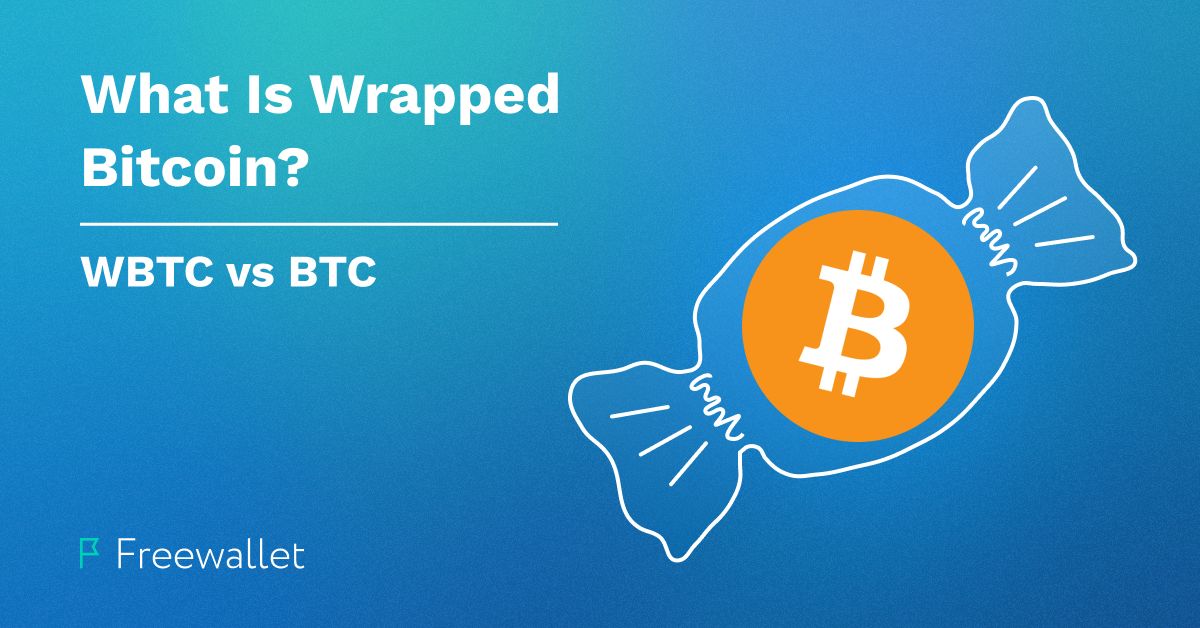
In the dynamic landscape of decentralized finance (DeFi), the concept of “wrapped” crypto assets has emerged as a crucial innovation, bridging the gap between different blockchain ecosystems. Wrapped assets are essentially tokens representing the value of an underlying cryptocurrency on a different blockchain.
This process allows assets native to one blockchain (like Bitcoin on the Bitcoin network) to be used within the DeFi ecosystem built on another blockchain (like Ethereum).
The primary benefit of wrapped assets lies in their ability to unlock liquidity and expand the utility of cryptocurrencies that might otherwise be restricted to their native blockchain. This opens up numerous opportunities for users, enabling them to participate in DeFi applications, decentralized exchanges (DEXs), and yield farming protocols that might not directly support the original asset.
Wrapped assets maintain a 1:1 peg with their underlying counterpart, theoretically meaning one wrapped token always equals one unit of the underlying asset.
This article focuses on one of the most prominent examples of wrapped assets: Wrapped Bitcoin (WBTC). We will delve into the mechanics of WBTC, its utility within the DeFi ecosystem, and the benefits and risks associated with its usage.
What Is Wrapped Bitcoin (WBTC)
Wrapped Bitcoin (WBTC) is an ERC-20 token representing one Bitcoin (BTC) locked in a 1:1 ratio on the Ethereum blockchain. This means that for every WBTC token in circulation, one BTC is securely stored in a custody solution. This process allows BTC, which resides on its own separate blockchain, to be used within the Ethereum DeFi ecosystem, unlocking a vast array of opportunities for BTC holders.
The process of creating WBTC involves several key steps:
- Deposit: Users deposit BTC into a custodian’s account, which is audited regularly to ensure transparency and security. These custodians are responsible for safely holding the deposited BTC.
- Minting: Once the BTC is received, a corresponding number of WBTC tokens are minted on the Ethereum blockchain via a smart contract. This contract verifies the deposit and ensures the 1:1 ratio between BTC and WBTC is maintained.
- Redemption: Users can redeem their WBTC tokens for BTC at any time by sending their WBTC to the redemption contract. The contract verifies the WBTC and releases the equivalent amount of BTC from the custodian’s account.
The primary advantage of WBTC is the ability to utilize BTC within the Ethereum DeFi ecosystem. This allows BTC holders to participate in various activities. It includes decentralized lending and borrowing (WBTC can be used as collateral in lending protocols, allowing users to borrow other cryptocurrencies or stablecoins), yield farming (users can earn interest by providing liquidity in decentralized exchanges (DEXs) that support WBTC), decentralized exchanges (or DEXs) (WBTC can be traded directly on many DEXs, offering increased liquidity and trading options), and in other DeFi applications (WBTC can be used in a wide range of other DeFi applications, expanding its utility significantly).
While WBTC offers significant benefits, it’s essential to acknowledge potential risks. These include:
- Smart contract vulnerabilities: The security of the smart contract governing WBTC is paramount. Any vulnerabilities could be exploited, potentially leading to the loss of funds. Regular audits and rigorous security measures are crucial.
- Custodian risk: Although custodians are regularly audited, there remains a degree of risk associated with entrusting them with BTC. Careful selection of reputable custodians is vital.
- Price volatility: While WBTC maintains a 1:1 peg with BTC, the price of both can fluctuate significantly. Understanding and managing this inherent volatility is important.
Despite these risks, WBTC remains a vital tool within the DeFi ecosystem, providing increased liquidity and accessibility for one of the world’s most valuable cryptocurrencies. Its success hinges upon ongoing security audits, transparency, and the continuous improvement of its underlying infrastructure.
WBTC vs. BTC
While both Wrapped Bitcoin (WBTC) and Bitcoin (BTC) represent essentially the same value – one Bitcoin – they exist and function in significantly different ways. Understanding these differences is crucial for choosing the appropriate asset for your needs.
| Feature | Wrapped Bitcoin (WBTC) | Bitcoin (BTC) |
| Blockchain | Ethereum (ERC-20 token) | Bitcoin blockchain |
| Accessibility | Accessible within the Ethereum DeFi ecosystem | Primarily accessible on the Bitcoin blockchain |
| Liquidity | Generally higher liquidity within DeFi applications | High liquidity but limited within DeFi applications |
| Use cases | DeFi lending, borrowing, yield farming, DEX trading | Primarily as a store of value, payments, etc. |
| Custodian Risk | Risk associated with the custodians holding the BTC | No custodian risk (self-custody is possible) |
| Security | Relies on the security of the custodian and smart contract | Relies on the security of the Bitcoin blockchain |
| Transaction Fees | Ethereum network gas fees apply | Bitcoin network transaction fees apply |
In general, BTC remains the original and foundational cryptocurrency, primarily serving as a store of value. WBTC bridges the gap, allowing BTC holders to participate in the thriving DeFi ecosystem built on Ethereum.
The choice between BTC and WBTC depends entirely on the user’s priorities and goals. If access to DeFi applications is paramount, WBTC is the preferred choice. If security and self-custody are prioritized, then holding BTC directly is more appropriate.
Where and How to Buy WBTC?
Purchasing WBTC can be achieved through several methods, primarily involving reputable cryptocurrency exchanges and decentralized exchanges (DEXs). The process typically involves using a cryptocurrency exchange that supports WBTC trading. Here are the common steps:
- Choose an exchange: Select a trusted and regulated cryptocurrency exchange that lists WBTC. Ensure the exchange has a good security record and user reviews.
- Fund your account: Deposit funds into your exchange account using one of the accepted methods (e.g., bank transfer, credit/debit card, other cryptocurrencies).
- Buy WBTC: Once your account is funded, use the exchange’s interface to buy WBTC. You’ll typically exchange another cryptocurrency (like ETH or stablecoins) for WBTC.
- Transfer (optional): If you wish to use your WBTC within a specific DeFi platform, you’ll need to transfer it from the exchange to your chosen DeFi wallet address.
- Decentralized exchanges (DEXs): DEXs like Uniswap also offer the possibility of trading for WBTC. This typically involves swapping another ERC-20 token for WBTC. However, DEXs generally require more technical knowledge and carry slightly different risks.
Several more tips while considering where to buy WBTC:
- Expect fees on both the exchange and, potentially, the network (gas fees for Ethereum transactions).
- Always prioritize security. Use strong passwords and enable two-factor authentication (2FA) wherever possible.
- Thoroughly research any exchange or DEX before making a purchase to ensure its legitimacy and security.
- Remember to always exercise caution and due diligence when dealing with cryptocurrencies. Never invest more than you can afford to lose, and carefully research all platforms and services before engaging in any transactions.
Above you can see the list of the centralized exchanges where you can buy WBTC.
Conclusion
Wrapped Bitcoin (WBTC) represents a significant innovation in the cryptocurrency space, effectively bridging the gap between Bitcoin and the burgeoning DeFi ecosystem on Ethereum. It offers increased utility for BTC holders, allowing access to a range of DeFi applications and services that were previously unavailable.
While risks associated with custodians and smart contract vulnerabilities exist, the benefits of accessing DeFi opportunities often outweigh these concerns for many investors. The continued growth and adoption of WBTC will depend on maintaining transparency, security, and the seamless integration with the ever-evolving DeFi landscape. Careful consideration of these factors is crucial before investing in or utilizing WBTC.
FAQ
Is WBTC safe?
WBTC’s safety relies on the security of the custodians holding the underlying BTC and the smart contract governing the minting and redemption process. Regular audits are crucial to mitigate risk, but no system is entirely risk-free.
What are the benefits of using WBTC over BTC?
WBTC allows participation in Ethereum’s DeFi ecosystem, unlocking access to lending, borrowing, yield farming, and various other decentralized applications unavailable directly to BTC.
Is there a risk of losing my WBTC?
Yes, there’s a risk associated with smart contract vulnerabilities and potential issues with the custodians. Choosing reputable custodians and keeping abreast of security audits is essential.
How does WBTC maintain its 1:1 peg with BTC?
The 1:1 peg is maintained through the mechanism of locking BTC in a custodian’s account and minting an equivalent amount of WBTC. Regular audits help ensure this ratio remains accurate.
Related
Stay tuned
Subscribe for weekly updates from our blog. Promise you will not get emails any more often.
Most Popular
New Posts
Stay tuned
Subscribe for weekly updates from our blog. Promise you will not get emails any more often.





